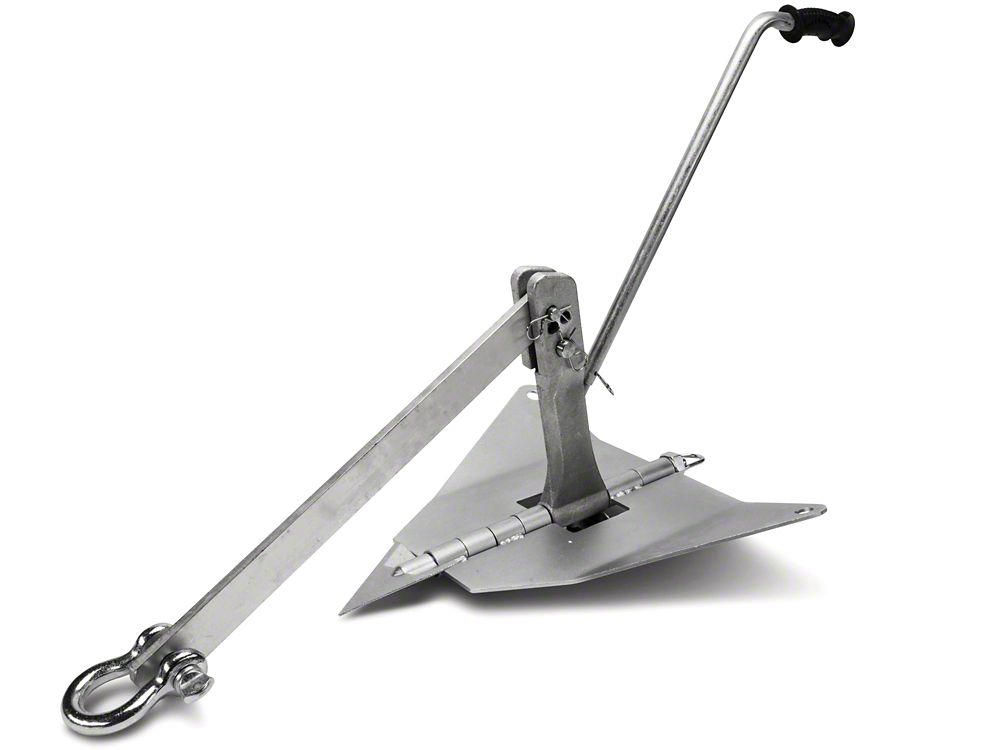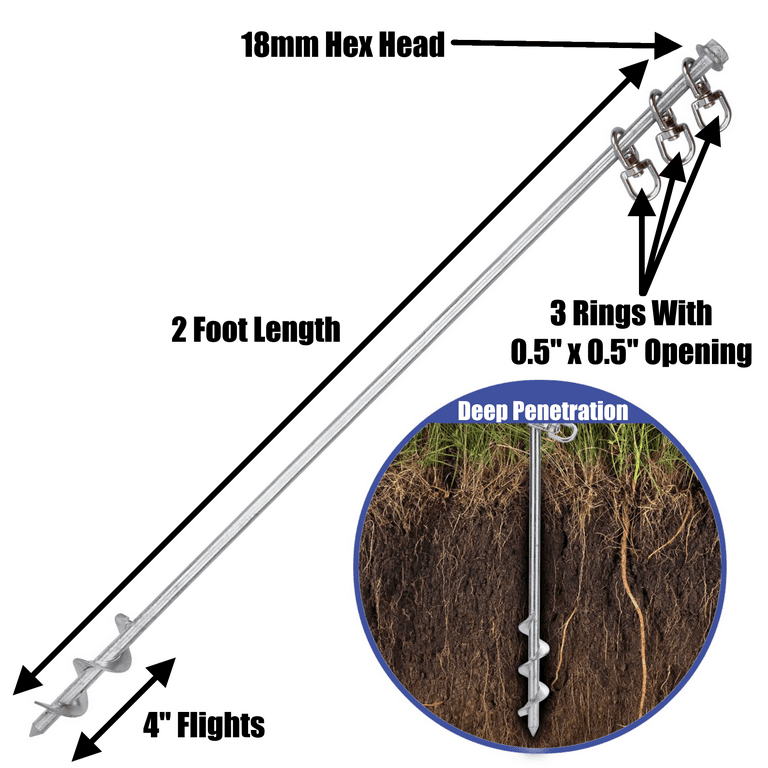Explore the Different Types of Ground Anchor for Your Next Project
From auger supports, which stand out in varied dirt conditions, to risk anchors created for momentary installations, the choices are various. Additionally, concrete and screw anchors existing unique advantages in details scenarios, while deadman anchors are tailored for applications needing resistance to side pressures.

Auger Anchors
Auger anchors are a preferred option in various building and construction and landscaping jobs as a result of their special design and effective securing capacities. These supports are composed of a helical screw-like shaft that is driven right into the ground, enabling a protected and secure hold. The spiral design promotes very easy installment and optimizes resistance versus lateral forces, making auger supports specifically reliable in applications such as fencing, temporary structures, and disintegration control.
The installation procedure of auger anchors is reasonably simple. They can be by hand or mechanically set up, depending on the dimension and needed depth. This versatility enables their use in diverse soil conditions, from sandy to clayey terrains. In addition, auger anchors can be easily removed and reused, which adds to their cost-effectiveness and sustainability.
One of the significant advantages of auger supports is their capacity to disperse loads equally throughout the bordering soil, reducing the threat of soil disturbance and reducing ecological impact. Additionally, they are much less at risk to heaving or loosening up in time compared to standard anchoring approaches. Subsequently, auger anchors are an excellent choice for projects needing resilient and trusted anchoring solutions.

Risk Anchors
When it comes to safeguarding structures in a range of exterior applications, stake supports use a straightforward and dependable option. These supports are typically constructed from resilient materials such as steel or aluminum, designed to stand up to environmental stress and anxieties while supplying ideal stability. Their straightforward layout allows for fast installment, making them an excellent selection for irreversible or short-lived anchoring demands.
Stake anchors are specifically beneficial in safeguarding tents, covers, and various other light-weight frameworks versus wind and weather condition. They function by being driven right into the ground at an angle, creating a solid hold that withstands pull-out pressures - Ground Anchor. The effectiveness of stake anchors depends upon several variables, including dirt kind, wetness content, and the angle of setup
For included safety, many stake supports come with add-on points for ropes or straps, permitting stress adjustments as needed. In applications such as landscaping or building and construction, they can effectively maintain tools or structures on uneven surface. Generally, risk supports offer a cost-efficient and functional option for securing different outside installments, making them a recommended choice for professionals and do it yourself fanatics alike.
Concrete Anchors
Concrete anchors supply a robust option for protecting structures to concrete surface areas, guaranteeing security and security in different applications. These supports are necessary for jobs varying from residential building and constructions to massive industrial installments. They can be found in different types, consisting of development look at here supports, sticky supports, and undercut anchors, each designed for details tons needs and environmental conditions.
Expansion supports rely upon mechanical mechanisms to grip the concrete when mounted. They are optimal for tool to durable applications. Sticky supports use high-strength epoxy or material to bond the support to the concrete, offering superior load-bearing capabilities, specifically in fractured concrete circumstances. Undercut supports create a distinct shape within the concrete, providing exceptional holding power, particularly in applications where tensile tons are common.
When implemented properly, concrete supports significantly improve the structural honesty of different jobs, making them essential in modern building and construction techniques. Comprehending the particular demands of your task will assist in selecting the right kind of concrete anchor for the task.
Screw Anchors

Screw anchors are a functional attaching service that can be effectively employed in a selection of applications where conventional concrete anchors may not be adequate. These anchors include a helical layout that enables them to be conveniently driven into the ground, making them ideal for use in dirt and other substratums. Their unique framework gives exceptional holding power and resistance to pull-out forces, making them ideal for various tasks, from landscaping to architectural assistance.
One of the main benefits of screw supports is their simplicity of setup. They need minimal equipment and can commonly be set up without the requirement for excavation, which saves both time and labor prices. Additionally, screw anchors can be removed and recycled, offering a lasting option for momentary applications.
Screw anchors are particularly valuable in locations where dirt conditions are testing, such as loosened or sandy soils. Their capacity to be mounted at varying midsts enables modification based on certain project requirements. In general, screw supports supply a dependable and effective anchoring approach, making them an outstanding selection for engineers and service providers looking for effective solutions for their tasks.
Deadman Anchors
Deadman supports function as a robust solution for maintaining structures in tough problems, specifically where standard securing techniques might drop short. These anchors include big, heavy items buried underground, which create resistance against side pressures. The design generally includes a horizontal part, such as a block of concrete or a steel plate, buried in the dirt, to which straps or wires are affixed.
The effectiveness of deadman anchors hinges on their capacity to distribute loads over a bigger area, lowering the threat of failing in unsteady dirt problems. They are specifically helpful in applications such as maintaining wall surfaces, short-lived frameworks, and incline stablizing, where soil motion can compromise the stability of the structure.
Installment of deadman supports needs mindful planning to guarantee they are placed at the appropriate depth and positioning, Check This Out maximizing their load-bearing capability. While they may need even more labor and material than lightweight anchors, their reliability in damaging problems makes them invaluable for long-term projects. Furthermore, deadman anchors are flexible and can be adjusted to numerous applications, making them a go-to choice for designers dealing with special difficulties in their tasks.
Verdict
In summary, choosing the ideal kind of ground anchor is vital for guaranteeing security and safety and security in different jobs. Auger supports master varied dirt conditions, while risk anchors fit short-lived applications. For concrete surfaces, development and sticky supports provide trusted options, and screw anchors use adaptability in difficult terrains. Deadman anchors are specifically effective in resisting lateral pressures for keeping wall surfaces. Cautious consideration of these alternatives will certainly boost task outcomes and architectural stability.
Furthermore, concrete and screw anchors present unique benefits in particular circumstances, while deadman supports are customized for applications calling for resistance to lateral pressures - Ground Anchor.Auger supports are a prominent option in different construction and landscape design jobs due to their distinct style and reliable securing capabilities. They come in different types, consisting of development supports, sticky anchors, and undercut you can look here anchors, each created for certain tons demands and ecological conditions
Sticky supports make use of high-strength epoxy or material to bond the support to the concrete, supplying remarkable load-bearing abilities, especially in split concrete scenarios. On the whole, screw supports give a trustworthy and efficient anchoring approach, making them an exceptional selection for service providers and designers seeking reliable services for their projects.
Comments on “Pro Tips on Correctly Maintaining a Ground Anchor for Reliable Performance”